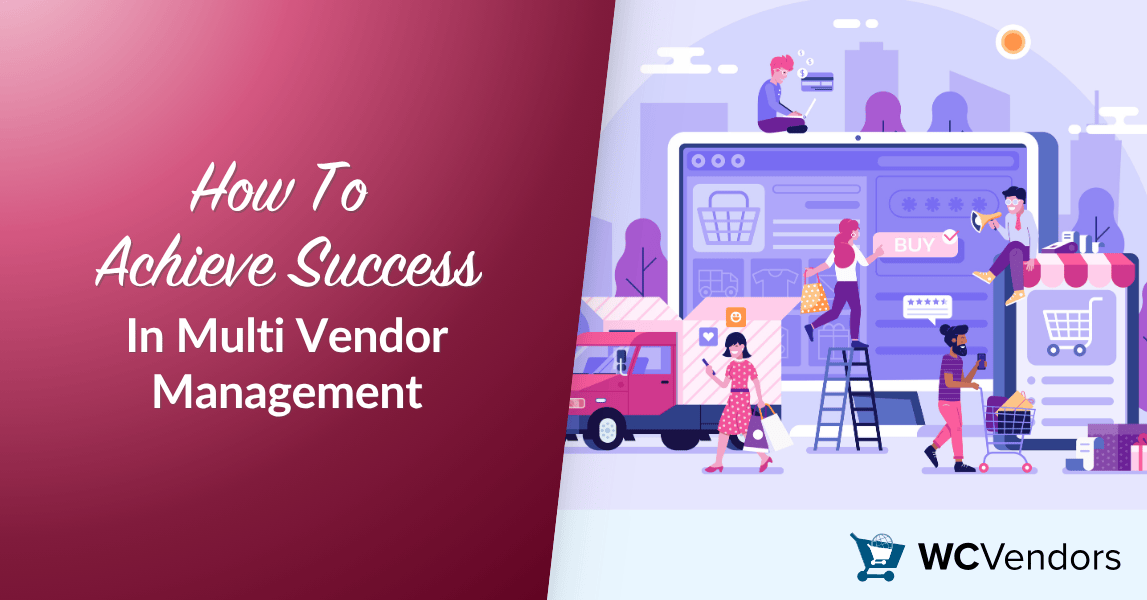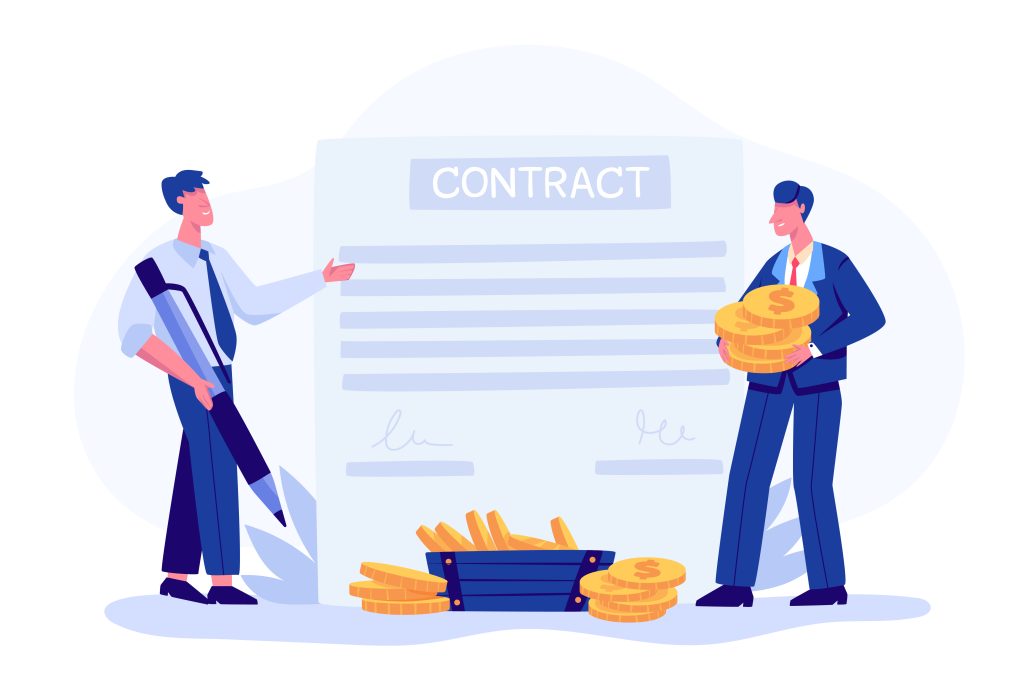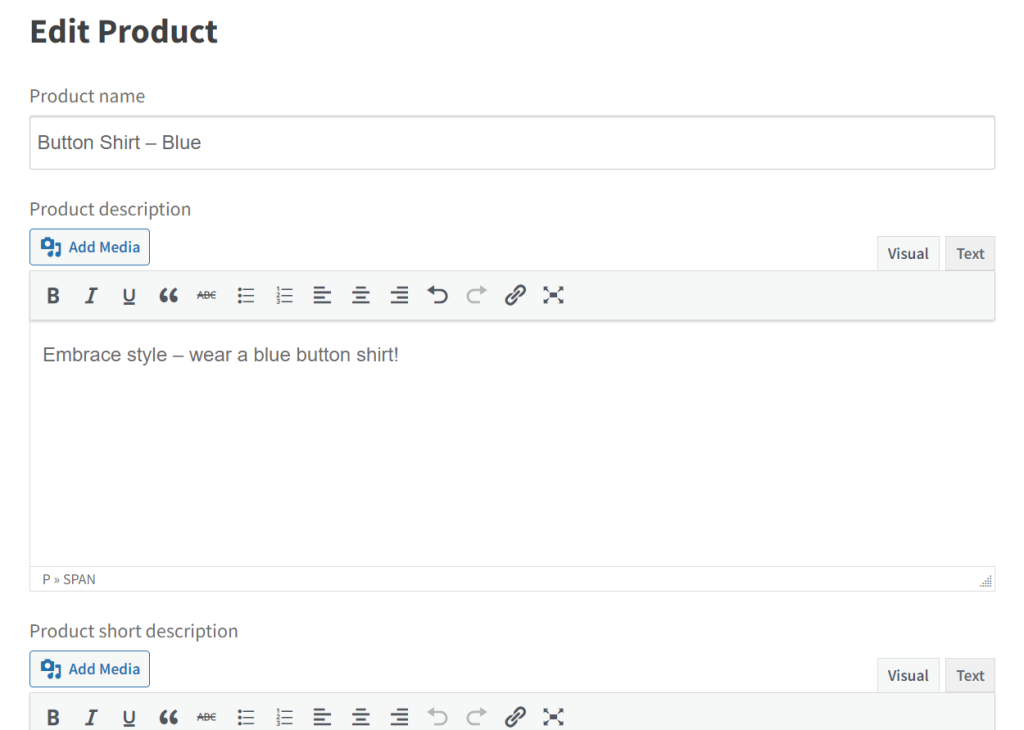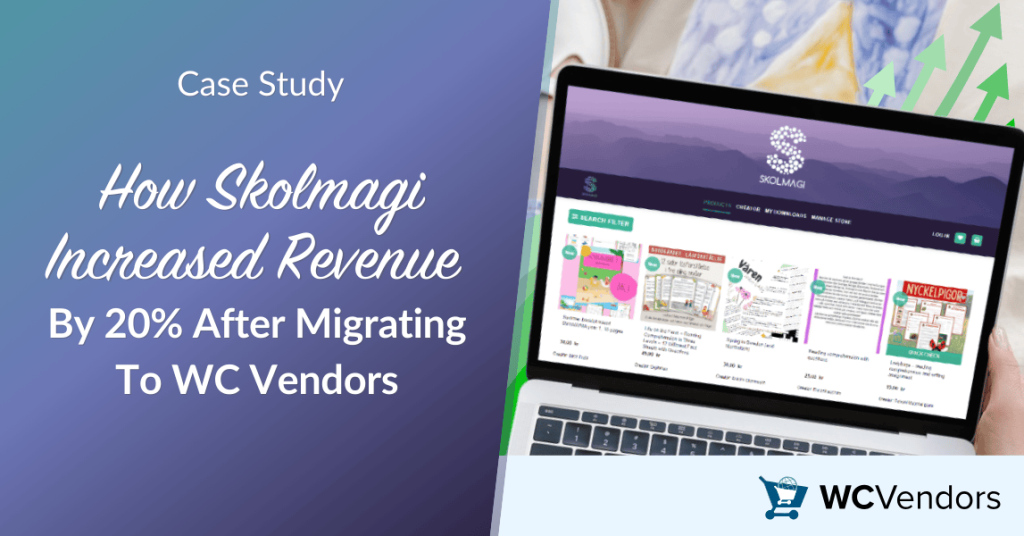
Running a marketplace with multiple sellers can be rewarding, but only if you have the right systems in place. That’s where multi vendor management comes in.
This guide will show you how to manage vendors more effectively, streamline operations, and build a marketplace that is structured for long-term growth.
You’ll learn how to reduce admin work, support your vendors, and deliver a better experience for your customers. With the right approach, your platform can grow steadily without becoming unmanageable.
Let’s get started.
What Is Multi Vendor Management And How Does It Work?
Multi vendor management is the process of supporting and organizing multiple sellers within a single marketplace. It covers onboarding, product listing oversight, order handling, payouts, and vendor communication. The goal is to keep everything aligned with your platform’s standards.
It’s the system that helps your marketplace run smoothly, even as it grows.
In a WooCommerce setup, for example, plugins like WC Vendors allow sellers to run their own storefronts within your platform. You control the rules and structure while giving vendors the tools they need to succeed.
This balance between platform control and seller autonomy is what makes multi vendor management work.

Why Does Multi Vendor Management Matter For Marketplace Growth?
When there’s no vendor system in place, problems pile up. Listings become inconsistent. Orders get delayed. Customer satisfaction drops.
Strong multi vendor management helps you avoid those issues while creating a marketplace that’s built to scale.
Here’s what it helps you achieve:
- Reduce admin workload
With clear systems, you spend less time chasing vendors and resolving support issues. - Encourage vendor participation
When sellers understand how to succeed, they stay active and contribute more. - Improve customer experience
Well-managed vendors deliver consistent listings, better communication, and faster shipping. - Scale with confidence
A structured vendor process allows you to grow your marketplace without added friction.
Vendor management plays a key role in seller success, customer trust, and your ability to grow without constant friction.
Key Strategies For Managing Multiple Vendors
Managing multiple vendors takes more than basic coordination. It involves setting up a system where sellers can succeed, customers receive a consistent experience, and your marketplace stays organized.
That includes selecting the right vendors, keeping communication clear, processing payments on time, and tracking performance regularly.
In the sections below, we will explore each strategy in detail. Furthermore, we will provide practical tips to help you handle the challenges of vendor management.
Establishing effective communication channels
Strong communication prevents misunderstandings and helps vendors stay informed. It also builds trust and makes support easier to manage. Here are a few practical ways to keep communication flowing:
- Dedicated email support – Provide a specific inbox for vendor-related inquiries so responses don’t get lost.
- Direct messaging systems – Use built-in messaging inside your marketplace for faster replies and quick updates.
- Regular newsletters – Send monthly or bi-weekly updates with platform news, tips, and announcements.
- Online forums or groups – Create a space where vendors can ask questions, share experiences, and offer support.

These communication channels will keep you in touch with your vendors. Additionally, you can quickly deal with any issues they might have!
Implementing vendor selection criteria
Choosing vendors who match your marketplace’s standards helps ensure a smooth experience for buyers. Set clear criteria for approving sellers:
- Quality of products or services – Only accept vendors offering items or services that fit your niche and meet customer expectations.
- Reliability and reputation – Look for vendors with strong reviews or a solid track record.
- Compliance with policies – Ensure vendors agree to follow marketplace rules from day one.
- Capacity to scale – Choose sellers who can grow with your platform and handle increasing demand over time.
Building a strong network of vendors helps maintain quality and trust, which ultimately keeps your marketplace competitive.
Now, let’s explore how enhancing payments benefits both your marketplace and vendors.
Streamlining payment processes
Vendors need to feel confident that they’ll be paid fairly and on time. Smooth, transparent payment processes build trust and reduce support issues.
Consider the following practices:

- Clear payment schedules – Set clear expectations for when vendors will be paid. Whether that’s weekly, twice a month, or monthly, consistency helps vendors plan ahead. With WC Vendors, you can configure payout frequency directly in the Payments settings to match your marketplace’s workflow.
- Multiple payment options – Give vendors a choice in how they receive funds. Some may prefer PayPal, while others use Stripe or direct bank transfers. WC Vendors supports multiple options, which you can enable under the Payments tab and explain clearly during onboarding.
- Detailed payment reports – Vendors should be able to check their performance without needing admin assistance. Sales reports and order breakdowns help sellers make informed decisions. WC Vendors includes a detailed Reports tab on each vendor’s dashboard, showing real-time sales, revenue, and order data.
Offering predictable payments and easy access to reports empowers vendors to manage their finances with confidence. As vendors learn to manage their money better, the next step is to help them boost their performance through specific targets.
Let’s look into how keeping an eye on performance metrics can improve vendor performance on your platform.
Setting and monitoring performance metrics

Performance data helps vendors stay on track and gives you visibility into how they’re doing. Use clear, trackable metrics to guide vendor success:
- Sales volume – Monitor the number of sales each vendor makes. Additionally, WC Vendors has a sales reporting feature that updates in real time. This lets vendors see their total product sales, helping them spot sales trends. Vendors can check their sales by going to their dashboard, clicking on the ‘Reports‘ section, and selecting the ‘Sales by Date‘ report. This will give them a clear view of their sales performance over time.
- Customer ratings and reviews – Monitor customer feedback to assess product and service quality. WC Vendors also allows customers to rate and review products. Vendors should check ratings and reviews in the ‘Products’ dashboard section.
- Return rates – Monitor product return frequency to identify potential issues. Moreover, WC Vendors integrates with WooCommerce to track returns. High return rates may indicate product quality or description problems. Vendors should regularly review the ‘Orders‘ dashboard for return requests to pinpoint causes and reduce occurrences.
- Compliance with policies – Ensure vendors adhere to marketplace rules set via WC Vendors. Additionally, regularly monitor their activities to verify timely shipping and accurate product descriptions. Visit the ‘Vendors‘ section in WC Vendors to review profiles and activities. Promptly notify vendors of any rule violations and provide guidance for resolution.
Regular check-ins and clear feedback help set expectations and keep quality high. When vendors understand how they’re performing, it’s easier to have productive conversations that lead to real improvements.
Once you’ve got a review system in place, the next step is making sure your agreements and responsibilities are clearly documented. Let’s look at how to manage contracts and vendor terms effectively.
Managing contracts and agreements
Vendor contracts set clear expectations and reduce confusion. Make sure your agreements cover key areas:

- Terms of service – Clearly define the terms and conditions of using your marketplace. WC Vendors has a terms of service template you can edit. It also lists the rules for vendors. To update your terms, open WC Vendors and click on ‘Settings‘. Then, find the ‘Terms of Service‘ tab. Include rules about listing items, customer service, and what’s not allowed.
- Payment terms – Describe how and when vendors get paid, including fees or deductions. WC Vendors lets you put this information in the vendor agreement. To do this, go to the ‘Payments‘ section in WC Vendors settings. Add payment details there. Make sure vendors read and agree to these terms when they join.
- Performance expectations – Make sure vendors know what you expect for sales, service, and quality. WC Vendors helps you watch these things. Tell vendors what you expect when they start. Give them feedback often, using their performance reports. For tracking, check the ‘Reports‘ section in WC Vendors and share the findings with your vendors.
- Dispute resolution procedures – Set up ways to handle disagreements with vendors. WC Vendors has a system for this. Moreover, explain how to solve disputes in your terms of service. Use the ‘Support‘ or ‘Help‘ areas in WC Vendors to keep track of disputes. This also helps everyone know the steps to follow.
Finally, we will explore the challenges we face in managing multiple vendors. It involves making sure everyone communicates well and keeps up the quality. Knowing these hurdles is important to handle them right.
What Are The Challenges Of Managing Vendors In A Marketplace?
Picture a project involving multiple vendors. One supplies materials, another provides services, and a third handles assembly. Each plays an important role but without the right structure, challenges start to appear. Expectations get misaligned. Communication breaks down. Quality becomes inconsistent.
These are common hurdles in multi vendor marketplaces. And without a solid management system, they can slow down progress and affect the customer experience.
Clear communication, defined responsibilities, and shared goals help keep things on track. With proper planning and vendor coordination, your marketplace is better equipped to grow steadily.
Establishing clear policies
Managing multiple vendors requires structure. Having clear policies keeps your marketplace consistent and easy to navigate—for both sellers and customers.
Here’s where to start:
- Payment guidelines – Set clear rules around commission rates, payout schedules, and payment methods so vendors always know what to expect.
- Listing standards – Define how product descriptions, images, and categories should be presented to maintain a cohesive, professional storefront.
- Customer service expectations – Outline response times, return processes, and communication best practices to ensure consistent service across vendors.
- Legal and safety compliance – Make sure vendors understand their responsibilities when it comes to taxes, data privacy, and product regulations.
Providing regular training
When managing multiple vendors, it’s important to offer regular training sessions. These help your vendors learn about the rules, like when they get paid and how to list products.
Training also shows them the best ways to sell and keep customers happy. Moreover, they learn about important laws for safety and keeping customer data safe. With these sessions, vendors grow their skills, follow the rules better, and help your marketplace succeed.
Staying proactive
Effective multi vendor management means anticipating challenges before they happen and creating systems that prevent them from slowing you down.
Make it a habit to review marketplace policies, track vendor performance, and gather feedback regularly. Watch for changes in regulations or industry trends that may impact your sellers.
Being proactive helps you adapt early, avoid disruptions, and keep your platform growing in the right direction.
What Are Examples Of Successful Multi Vendor Management?
Multi vendor management works best when vendors have independence, but within a clear framework. That balance is exactly what successful marketplaces aim for.
Let’s look at how three real WC Vendors users built structured, scalable vendor operations.
Skolmagi: Streamlining vendor contributions at scale
Skolmagi hosts thousands of digital teaching resources from independent educators. Managing that many contributors without multi vendor management could quickly spiral into inconsistency.
According to Skolmagi, switching to WC Vendors Pro gave them the ability to implement structured multi vendor management practices. They set standardized listing rules, automated SEO inputs, and delegated product management to vendors while still maintaining marketplace oversight.
In a case study by WC Vendors, they shared how vendor dashboards, scheduled payouts, and sales reporting significantly reduced admin support tickets. These features allowed them to ensure marketplace-wide consistency, which is essential when coordinating hundreds of vendors at once.
Sonniss: Coordinating a global network of audio creators
Sonniss is a digital marketplace for sound libraries contributed by hundreds of sound designers. Vendor autonomy plays a major role, but so does the structure provided by proper multi vendor management.
In their WC Vendors case study, Sonniss noted that vendor self-management features allowed creators to upload, price, and manage products independently. At the same time, centralized commission controls, product rules, and real-time reporting supported consistent standards and scalable operations.
According to Sonniss, this level of multi vendor management gave them the foundation to scale globally without overwhelming their internal team.
Prolific Writers Life: Managing services, sessions, and vendor expectations

Unlike product marketplaces, Prolific Writers Life runs a service-based platform where writers book one-on-one coaching, editing, and classes from vendor experts.
Managing services introduces added complexity, especially around scheduling, booking policies, and fulfillment.
According to Prolific Writers Life, WC Vendors’ vendor dashboards and booking integrations helped them implement multi vendor management systems that set clear guidelines for sessions, create feedback loops for quality control, and define custom vendor terms to prevent misunderstandings.
In their case study, they described how performance visibility and structured communication helped vendors stay aligned with expectations while still managing their own service-based businesses.
Conclusion
If you want your marketplace to scale smoothly, you need a system for managing sellers that doesn’t break down as your vendor base grows. That’s what multi vendor management helps you achieve.
In this guide, we’ve covered:
- What multi vendor management
- Why it’s important for marketplace growth and customer trust
- Key strategies for managing multiple vendors
- The most common multi vendor management challenges
- Examples of multi vendor management
If you’re aiming to grow a marketplace with less stress and more structure, the right multi vendor management system makes all the difference. WC Vendors gives you the features, flexibility, and control to support your sellers and scale with confidence.
See it for yourself on the WC Vendors live demo. When you’re ready to build a better-managed marketplace, check out our pricing plans and get started today.
Frequently Asked Questions About Multi Vendor Management
What is the role of a marketplace admin in multi vendor management?
The marketplace admin oversees vendor onboarding, sets policies, manages disputes, ensures rule compliance, and supports sellers. Admins act as both facilitator and regulator.
Beyond basic setup, admins play a critical role in maintaining marketplace quality. They review vendor applications, communicate updates, enforce listing standards, resolve conflicts, and provide tools vendors need to succeed. Good admin oversight prevents chaos as the seller base grows.
How do you handle vendor disputes in a multi vendor marketplace?
Vendor disputes are managed through clearly defined policies, documented communication, and a structured resolution process handled by the marketplace admin.
To avoid miscommunication, set clear terms of service from the start. Use support ticket systems or built-in messaging to document conversations. Have an internal review and resolution process so vendors feel heard and treated fairly. Consistency is key to trust.
Can vendors manage their own stores in a multi vendor marketplace?
Yes, in a properly managed system, vendors can handle their own listings, pricing, and orders while the admin sets platform-wide rules.
Using platforms like WooCommerce with WC Vendors, sellers can run storefronts independently—adding products, fulfilling orders, and viewing reports. At the same time, the admin retains control over commissions, payout schedules, listing guidelines, and more. It’s a balance of autonomy and oversight.
What policies should every multi vendor marketplace have?
Key policies include vendor terms, payout rules, product listing standards, customer service expectations, and compliance guidelines.
Set written policies during onboarding so expectations are clear. This includes what products are allowed, how disputes are handled, when payments are issued, and how vendors should respond to customers. Strong policies prevent confusion and create a consistent customer experience.
How do you keep vendors motivated in a multi vendor marketplace?
Vendor motivation comes from transparent earnings, performance insights, good support, and opportunities for growth.
Providing vendors with dashboards, real-time sales data, clear communication, and timely payments makes them feel supported. You can also run incentives, highlight top performers, or share customer feedback. Vendors who feel valued and informed are more likely to stay engaged and perform well.



